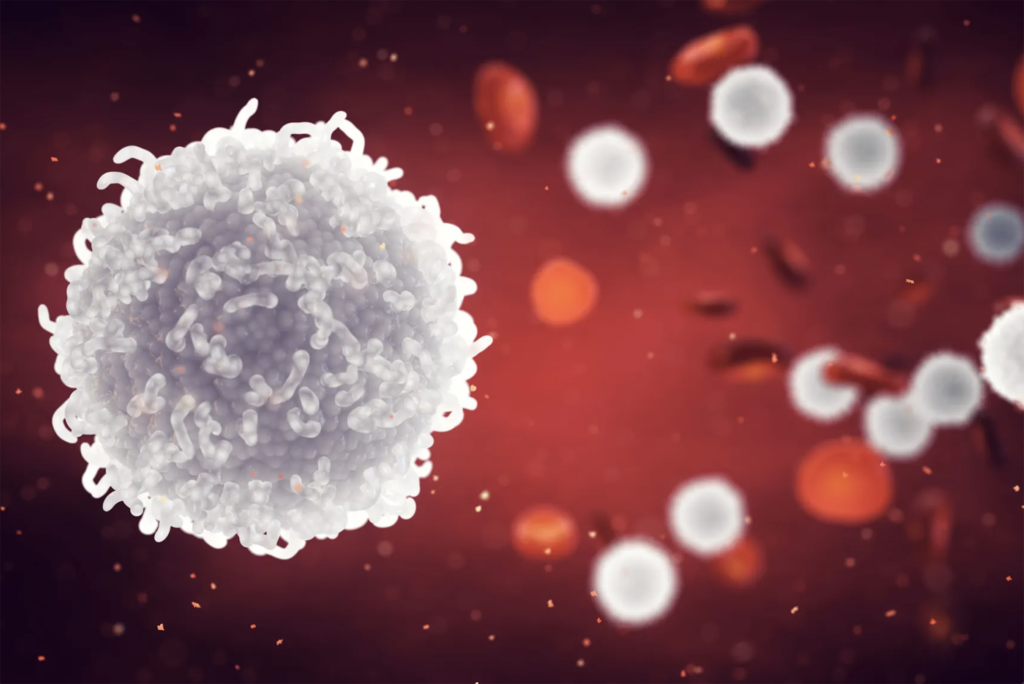One of the most common blood tests is called a CBC – short for complete blood count. It is used to look at overall health and can be used to diagnose a wide range of conditions, including anemia, infection and cancers of the blood like leukemia.
Interpretation of CBC results is best done by a medical professional and involves comparing a patient’s values to normal ranges while considering current signs and symptoms, health conditions and medications.
In general, a CBC measures the following:
Red blood cells (RBC count): these carry oxygen
Hemoglobin (Hgb): the oxygen-carrying protein in red blood cells that gives blood its red color
Hematocrit (Hct): the amount of red blood cells in the blood
White blood cells (WBC count): these fight infection
Platelets: cells which help blood to clot
Other values seen on a CBC:
Mean corpuscular volume (MCV): measures the average volume of red blood cells
Mean corpuscular hemoglobin (MCH): measures the average amount of hemoglobin per red blood cell
Mean corpuscular hemoglobin concentration (MCHC): measures the average concentration of hemoglobin in red blood cells
Red cell distribution width (RDW): measures the variation in red blood cell size
Reticulocyte count: measures the percentage of young red blood cells in the blood
Platelet distribution width (PDW): measures variation in platelet size
A CBC can show unusual increases or decreases in cell counts, and these changes can help point to certain medical conditions.
For instance, low counts of red blood cells, hemoglobin and hematocrit is called anemia. Anemia is quite common, affecting millions worldwide. Some patients only find out they have anemia when they have routine tests done on an annual examination, in preparation for surgery or before donating blood. Once anemia is diagnosed, other tests may be ordered to determine the underlying cause of the anemia.
The other components of the CBC, such as the MCV, RDW and reticulocyte count, can also help diagnose anemia and point to the probable cause.
White blood cells are crucial to the immune system. They are produced in the bone marrow and circulate throughout the bloodstream and lymphatic system, defending the body against infections, viruses, bacteria and other pathogens.
When a “differential count” is ordered with a CBC, this looks at the values of the different types of white blood cells. Each type of white blood cell has a specific function, and abnormalities in their numbers or function can indicate various health conditions, including infections, autoimmune diseases, allergic reactions and certain cancers.
Neutrophils are the most abundant type of white blood cells and are the first responders to infections. They engulf and destroy bacteria and fungi.
Lymphocytes play a central role in the immune response, coordinating and directly participating in the body’s defenses. Lymphocytes also produce antibodies, which recognize and neutralize specific antigens, such as viruses and bacteria.
Monocytes are large white blood cells that help to engulf and destroy organisms that can cause disease.
Eosinophils primarily target parasites like worms, and they are also involved in allergic reactions and asthma.
Basophils release chemicals involved in allergic reactions and inflammation, and also help the body fight against parasites.
Platelets, also known as thrombocytes, are small cell fragments produced in the bone marrow. While they are much smaller than red or white blood cells, platelets are necessary for the body’s ability to form blood clots, which is essential for preventing excessive bleeding when an injury occurs.
Abnormal bleeding can occur when platelet counts are low (thrombocytopenia), which is why platelet counts are closely watched in cases of dengue where the viral infection can cause platelet counts to drop. With a high platelet count (thrombocythemia), abnormal clotting can occur.
Complete blood counts are also used to monitor medical conditions and to check on the effects of medications and other medical treatments that affect blood cell counts, such as chemotherapy and radiation.
If you have a CBC done, always consult a healthcare provider for proper interpretation and diagnosis. The results should not be taken at face value, but understood within the context an individual’s overall condition.
